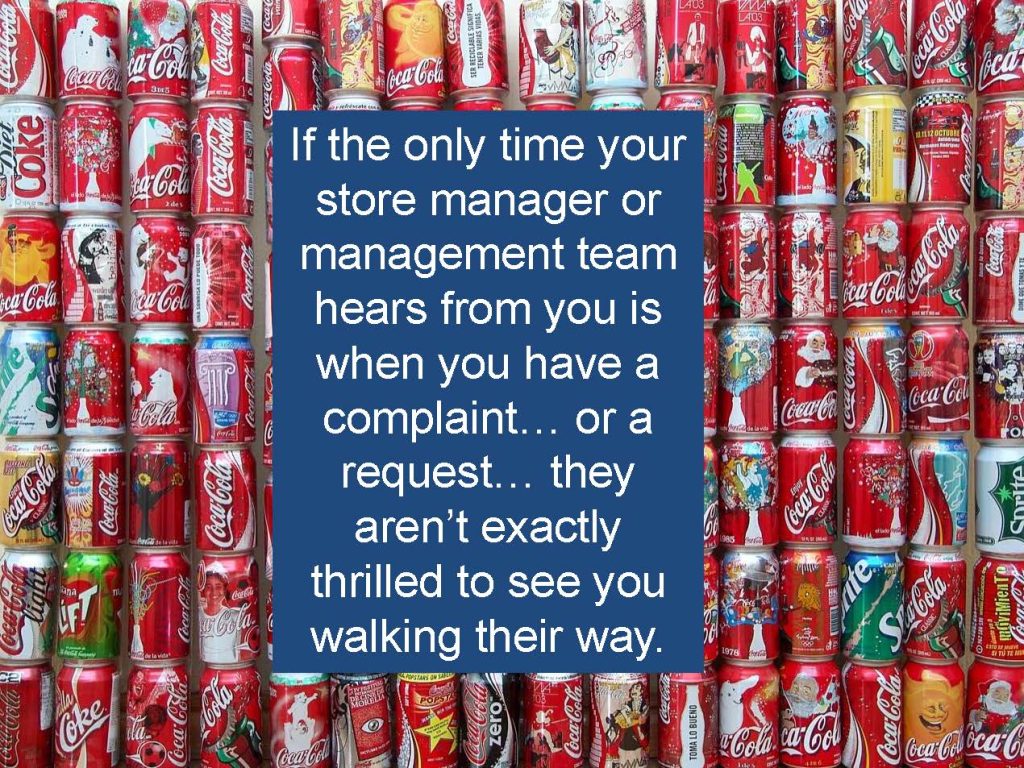The retailer’s success benefits the financial institution. The financial institution’s success benefits the retailer. As with any relationship, it is important that this fact is never forgotten. It is therefore important that the lines of communication are kept open and any questions that arise on either side are brought out in a positive manner.
Working Relationships Between the Financial Institution and Retailer
To help begin, build, and strengthen the working relationship between the financial institution and retailer, the following suggestions are made and included on the FSI Retailer Meeting Checklist.
As soon as the necessary documents are executed, a written letter from the President/CEO of the financial institution should be sent to the store location Manager, as well as other key individuals of the company (i.e., District Manager, Division President, Store Owner, etc.), expressing the desire for a long and mutually beneficial relationship.

As soon as practical, a location visit from the appropriate financial institution personnel is recommended. The branch manager/store location manager relationship is vitally important. It is essential that the store location manager gets to know their new tenants and “partners.” The store location manager is most often the strongest influence on the ability of an In-Store Branch to market itself within the store.
As appropriate and approved by the store location manager, information should be disseminated to the retail store personnel about the financial institution. This can be accomplished through many avenues, including: brochures, signs in the break rooms, a “Get to Know the Financial Institution” day, etc. Ideally, the employees of the store will become customers of the financial institution. Regardless of whether that occurs quickly, or at all, it is important that the store personnel view the financial institution in a positive light. In a healthy situation, the store personnel become great “word of mouth” salespeople for the financial institution.

Learning to Thrive in a Retail Environment
In-store associates have the unique opportunity of reaching a larger audience on a daily basis. Therefore, it is critical that each opportunity is a winning one. The in-store associate should remember that they are always “On Stage.” Shoppers tend to be observant of the branch’s activities and presence within the store. Understanding this dynamic will help you and your in-store team to communicate a clear message to shoppers and customers/members.
Always remember to:
- Make eye contact and offer a friendly smile to everyone.
- Enthusiastically greet those who pass or enter your branch.
- Engage everyone in conversation, when possible, before they arrive at your desk or window.
- Engage passersby in conversation at the earliest possible moment.
With Challenges Come Opportunities
A famous line from the film The Wizard of Oz is, “Toto…I don’t think we’re in Kansas anymore.” Dorothy was standing, wide-eyed, looking at a totally new and exciting place. The contrast of a quiet Kansas town to the Land of Oz can be compared to the contrast of a traditional branch to an in-store branch. It’s a different world inside a retail environment:
- Noise levels are increased.
- The visual environment is more bold, more distracting, and ever-changing.
- The customers move at a different pace.
- The In-Store Branch is not the primary destination of the majority of the customers in the store.
- Customers’ expectations and demeanors are different.
- Far more time and effort are spent on non-customers than at a traditional branch.
- Competition for the customers’ attention is fierce.
- The In-Store Branch hours are geared to the convenience of the store’s customers, not the financial institutions.
- Functions and tasks are interchangeable among the staff.
- The staff functions in a proactive manner.
- The In-Store Branch is a significant and highly visible commitment from the financial institution to improve products and a service delivery system.
- The retail environment fosters high energy levels and creativity.
- Constant competition for customer attention helps the In-Store.
- Customers are typically less restrained than within a traditional location.
This lends itself to easier and more open conversations. - The In-Store Branch is joined by an ally, the retailer, in attracting and retaining customers.
- In perhaps no other setting is it feasible to personally market and sell the financial institution’s products to non-customers on a regular basis.
- The extended and non-traditional hours of the In-Store Branch are best marketed during those extended and non-traditional hours.
- Frequent contact with customers cultivates stronger loyalties and better customer relationships.
- The smaller, multi-skilled staff speeds up the information flow and response time for customers.
- The need to be diversified and flexible helps develop In-Store staff members into stronger and more valuable associates.
